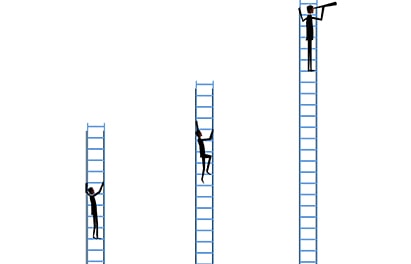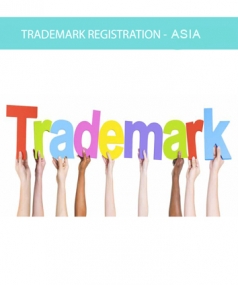Competition Law in Hong Kong
 Competition laws (also referred to as antitrust laws), in an economy, seek to promote innovation and the efficiency to reduce prices for the consumer, in a fair manner amongst businesses, by the regulation of anti-competitive conduct by businesses, and by ensuring that businesses act independently of one another whilst being subjected to competitive market pressure by other businesses in a fair manner.
Competition laws (also referred to as antitrust laws), in an economy, seek to promote innovation and the efficiency to reduce prices for the consumer, in a fair manner amongst businesses, by the regulation of anti-competitive conduct by businesses, and by ensuring that businesses act independently of one another whilst being subjected to competitive market pressure by other businesses in a fair manner.
In Hong-Kong however, the advent of competition law was seen much later in comparison to the rest of the global economy. This is an irony considering the fact that Hong Kong was named the third biggest financial center by the Global Financial Centers Index (GCFI) as of March 2019, just slightly edging out Singapore, to take the crown as Asia’s largest financial center.
After years of legislation on this matter, on 14th June 2012, the Competition Ordinance (Cap. 619) (the “Ordinance”) was passed by the Hong Kong Legislative Council, which later came into full effect on 14th December 2015. This introduced Hong Kong’s first-ever all-encompassing cross-sector antitrust law. Prior to this, only telecommunication and broadcasting businesses were subjected to competition law of some kind, under the Telecommunications Ordinance (Ch. 106 of the Laws of Hong Kong), and the Broadcasting Ordinance (Ch. 562 of the Laws of Hong Kong) respectively, with the Hong Kong Communications Authority placed in charge of enforcing these antitrust laws.
Upon going into effect, all antitrust matters, from a broad range of industries, were subject to the jurisdiction of the Competition Commission (the “Commission”), and the Competition Tribunal (the “Tribunal") under provisions outlined in the new Ordinance. The two aforementioned bodies of antitrust regulation seek to complement the work done by each other, under the Ordinance.
The Competition Commission has served as the primary regulatory authority for enforcement of the Ordinance. Its main role and purpose are to carry out investigations of suspected breaches of the competition law. The Commission may initiate its investigations on the basis of complaints received, by referral from a government body or a court, or by its individual initiative. Under the Ordinance, the Competition Commission has been granted with an exhaustive range of investigative powers, that have allowed the body to, inter alia, demand production of documents and information by businesses, and conduct raids on business premises.
The Competition Tribunal consists of judges of the Court of First Instance, and as a part of the judiciary, hears and decides on cases pertaining to competition law in Hong Kong.
The following article aims to analyze the mechanism of functioning of competition law in Hong Kong, and the landmark cases that it has witnessed since its inception.
Mechanism of Hong Kong’s Competition Ordinance: Ensuring a Level Playing Field
The primary outlook of the Hong Kong Competition Ordinance seeks to lay out a level playing field for all businesses operating in Hong Kong, in particular, it seeks to ensure better choices and products on the consumer’s end, and greater opportunities for businesses. It is certain that in a fair market, competition drives innovation and efficiency, thus propelling businesses to offer to meet the demands of their consumers at the right price.
With regards to the Competition Ordinance, the Competition Commission and the Communication Authority have released three primary guiding principles that constitute the antitrust law:
-
First Conduct Rule: The rule of first conduct (or the FCR) basically restricts businesses from creating or giving effect to agreements and/or decisions that have an effect of harming competition laws in Hong Kong. Simply put, if businesses agree to cooperate with competitors rather than compete, it would violate the FCR. The key points under the FCR are as follows:
- The FCR lays out the definition of “serious anti-competitive conduct”. In the event that the conduct by businesses is not of a “serious” nature, they may be granted a Warning Notice by the Competition Commission prior to being tried by the Competition Tribunal. The four broad categories that classify as “serious anti-competitive conduct” under the FCR are market sharing, price-fixing, bid-rigging, and placing output restrictions.
- The FCR also restricts businesses dealing a wide range of other agreements, even though they may not classify as “serious”. Examples include special types of franchise agreements, joint ventures, and selective distribution agreements. Whilst such measures may not seem to be anti-competitive on the surface (they may rather seem to be pro-competition), they may have the effect of distorting competition in certain contexts.
- The FCR also allows for the functioning of a “safe harbour” for the protection of small and medium enterprises (SMEs). If a business’s combined turnover from certain undertakings does not exceed HK$ 200 million for the time period that the undertaking was taking place, the agreements and decisions of associations (unless they amount to “serious anti-competitive conduct”) will be excluded from the FCR.
- Second Conduct Rule: The SCR usually applies to businesses with a great degree of market power and influence. The SCR restricts businesses in such positions to engage in conduct which has the intent or effect of harming the competition. Such conduct can have effects to a greater degree, such as excluding competitors from the market, which results in the limiting of choices available to consumers. Under the SCR, a threshold of HK$ 40 million is set, whereby if certain business conduct generates lesser than the aforementioned amount as turnover for that relevant period, it will be excluded from investigation. However, it is important to note that that merely crossing this threshold does not render businesses under the jurisdiction of the SCR. The SCR lays out guidelines on business practices mostly associated with conduct such as, but not limited to, the refusal to deal, predatory pricing, and tying and bundling. Also, with regards to the term “substantial degree of market power” outlined in the SCR, although not precisely defined, it usually refers to upwards of 25%.
- Merger Rule: The merger rule is quite simple. It prohibits businesses from participating (directly or indirectly) in mergers that may have the effect of diminishing competition in Hong Kong. However, in the first instance, the rule only applies to businesses in the telecommunications industry. Also, the Merger Rule also has applicability over mergers that may take place outside of Hong Kong, in the event that even party involved in the merger has a presence in the Hong Kong market.
Exclusions and Exemptions under the Ordinance
Under the Ordinance, certain exclusions and exemptions are afforded to businesses found to be in violation of the FCR and SCR. The exemptions are outlined as follows:
-
Exemptions under FCR: Under Schedule 1 of the Ordinance, the FCR would not be imposed on certain types of anti-competitive behaviour. Exclusions in such cases include the following examples:
- where agreements between businesses enhance the overall economic efficiency of Hong Kong,
- where agreements between businesses are made for the purpose of complying with other legal requirements,
- where agreements between businesses are of low significance.
In addition to these general exclusions, the Ordinance also provides for two other grounds of exemption, whereby an order from the Chief Executive of the Competition Commission is required to come into effect. In such cases, the Chief Executive may deem that:
- the agreements between businesses possess exceptional and compelling reasons of public policy, or
- the agreements between businesses, if not exempted, would lead to a conflict with an international obligation that Hong Kong is a part of.
- Exemptions under SCR: Under the SCR, the exclusions are analogous to the ones outlined in the FCR, with the exception that businesses will not be subject to the Ordinance in the case of abuse of a substantial degree of unfair power, if the undertaking’s worldwide annual turnover does not go over the aforementioned threshold of HK$ 40 million. Similarly, the Chief Executive of the Competition Commission may also grant exemptions in exceptional cases only for offences under the SCR.
Sanctions under the Ordinance
 The Competition Tribunal issues sanctions pertaining to offences under the Competition Ordinance in Hong Kong. Usually, it imposes a pecuniary penalty under Schedule 3 of the Ordinance which includes awards or damages for the aggrieved parties, injunctions and disqualifications orders against directors of companies, interim injunctions during the investigations, and disgorgement (repayment) orders.
The Competition Tribunal issues sanctions pertaining to offences under the Competition Ordinance in Hong Kong. Usually, it imposes a pecuniary penalty under Schedule 3 of the Ordinance which includes awards or damages for the aggrieved parties, injunctions and disqualifications orders against directors of companies, interim injunctions during the investigations, and disgorgement (repayment) orders.
In the cases of pecuniary penalties, they are usually issued for a maximum time period of 3 years and are to be capped at a maximum of 10% of the gross revenues obtained by the company only in Hong Kong. In the event that the actions of the business have lasted for more than 3 years itself, the Tribunal may choose to select the 3 years (of the total) wherein the business had its highest turnover, for the purpose of issuing the penalty.
Case Law: The Ordinance in Action
We shall now look at some of the landmark cases that have pertained to the competition law in Hong Kong since its inception.
The first ever case to be assessed by the Tribunal, and one of the most prominent was that of the YWCA (Young Women’s Christian Association”) IT tender case. In Competition Commission v Nunatix & Ors [2019] HKCT (CTEA 1/2017), the tribunal had sought proceedings against five IT companies (namely, Nutanix Hong Kong Limited, BT Hong Kong Limited, Innovix Distribution Limited, Sis International Limited, Tech-21 Systems Ltd. The Hong Kong YWCA had issued a tender in July 2016 for the replacement of servers at its headquarters. The Tribunal had suspected that the five IT companies who had placed bids for this tender had entered into various bilateral and trilateral agreements with one another so that one company would win the tender. On the 17th of May 2019, the Competition Tribunal had found four of the five companies to be involved in vertical bid-rigging, an offence under the First Conduct Rule of the Ordinance, and had found four of the companies to be “in distortion of competition”.
Another monumental case was that of Competition Commission v Fungs E&M Engineering Company and Others [2019] HKCT 3 (CTEA 2/2017), wherein the tribunal had found that 10 decorating companies had violated the Competition Ordinance under the First Conduct Rule by fixing prices and dividing up markets amongst each other. The Tribunal had found that the companies had divided up areas of three buildings in a public rental housing estate (which they were tasked to renovate), to the extent that they had divided up separate floors amongst each other. It was found by the court that the companies would refuse business from tenants of floors that they were not responsible for, a decision that they made amongst themselves with no oversight, whilst in fact, they were supposed to work together on all facets of the renovation.
 Conclusion
Conclusion
It can be seen from the aforementioned case laws that soon, Hong Kong will build up its exclusive legal precedents over time to tackle offences pertaining to Competition Law. However, as the competition laws in Hong Kong are still in their infancy, the Tribunal still refers to EU case law for its precedents. This highlights that Hong Kong’s competition law practice would still need to maintain an international outlook for the years to come.
 English
English
 عربي
عربي Русский
Русский 官话
官话 português
português
 Türk
Türk 



















